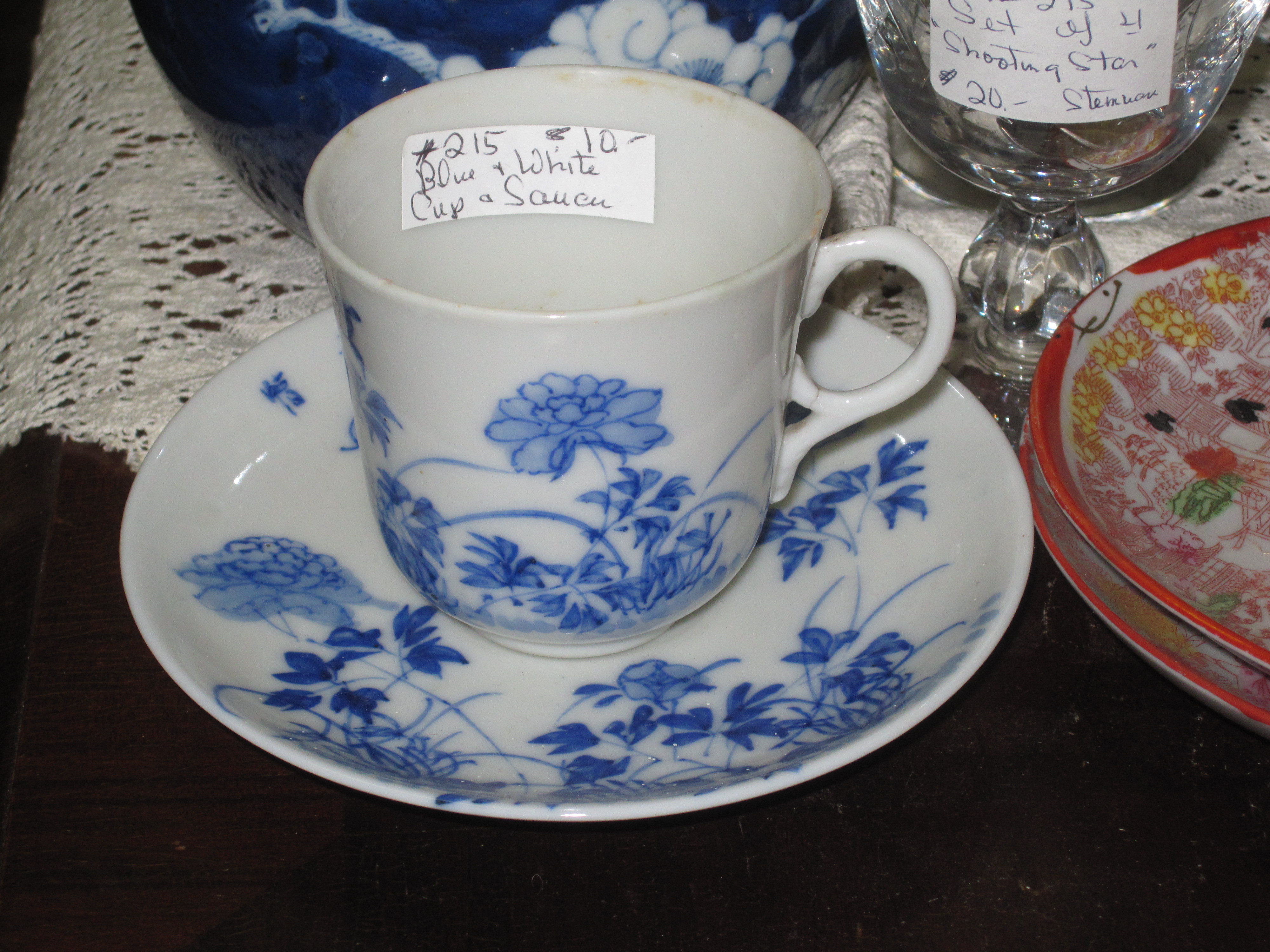 As I wandered through the stuffed-with-junk antique stores here in New Jersey last week, I stumbled across this small Japanese Seto porcelain tea-cup and saucer. Based on its traditional Western style and shape, it was most likely made for the export market somewhere around the turn of the 20th century. This reminded me once again, that although I am a blue and white porcelain junkie in Tokyo, many of my best finds have been made abroad in the US and England. And those finds are not limited to ceramics, but also glass, silver and just about anything that could be exported.
As I wandered through the stuffed-with-junk antique stores here in New Jersey last week, I stumbled across this small Japanese Seto porcelain tea-cup and saucer. Based on its traditional Western style and shape, it was most likely made for the export market somewhere around the turn of the 20th century. This reminded me once again, that although I am a blue and white porcelain junkie in Tokyo, many of my best finds have been made abroad in the US and England. And those finds are not limited to ceramics, but also glass, silver and just about anything that could be exported.
Fine sometsuke (underglazed cobalt porcelain) has been produced in Seto City and Aichi Prefecture for about the last 200 years, although the region boasted one of the six old kilns of medieval Japan and produced pottery since the 14th century. I bought my first piece in Hong Kong 14 years ago, a square planter, drawn to the brilliance of the cobalt and the feathery painting style of the artist. Ironically, I got it for a great price as the Chinese don’t tend to value Japanese porcelain. That piece lives happily in my Tokyo living room with two siblings, found at shrine sales.
Over the years I have accumulated many more pieces, including these lovely jubako (stacked food boxes)…
…and this cricket cage and covered fan box.
Thanks to a recent Kawagoe trip, I now have 2 big fish bowls.
One of the most beautiful and rare Seto items are garden stools. A fixture in China for 1000 years, porcelain garden stools have become one of the basic staples of home decorating, but they were actually used in gardens originally. Some find them ubiquitous these days, but they continue to fill that niche between seat and table and their variety of color and design means there is a place for them everywhere. I could do a 20 photo post on amazing rooms with them, but I’ll limit myself to some blue and white ones. All Chinese as there are many more on the marketplace, and I have yet to see a Japanese one in a magazine spread.
A few posts ago, I featured the home of Brazilian designer Sig Bergamin, but did not include this photo. A blue and white garden stool sits at the edge, ready to hold a drink for the person lounging in the white chaise.
Jeffrey Bilhuber is one designer who uses them all the time to great effect. This one has lovely open fretwork on the side.
Back in 1997-1998 there was a pair of Japanese stools at a shop in Cat Street in Hong Kong that I couldn’t afford. I had never seen any like them and I fantasized about them for years. No photo of course, but they live in my memory as being hexagonal. In 2005 I found one on my first trip to Kyoto, not long after we had moved to Japan. I didn’t buy it then either, but I did take a photo! Not a great photo, but it shows you how seriously I was thinking about it. Although in retrospect, it wasn’t that great of a garden stool either.
So the tea-cup at the top of the post reminded me of the amazing find I made last summer, that somehow I had forgotten about in all the hullaballoo and busy-ness of my life.
I went down to the basement and found this. What do you think is in here?
This!
I haven’t stopped to clean it or anything but am absolutely bowled over by it! It has so many of my favorite motifs – cracked ice, fan vignettes, open fretwork – and the form and painting is spectacular. And I had literally forgotten that I had ever bought it! My swiss cheese brain is starting to worry me….
Now the question is, how do I get it back to its family and friends in my Tokyo living room?
Related post: Colors of the Rainbow…Blue and White Porcelain is Neutral. And more on porcelain garden stools at Apartment Therapy.
Image credits: All photos by me except 6. Elle Decor April 2011 photo credit: Simon Upton, 7. design by Jeffrey Bilhuber, Photo credit unknown.

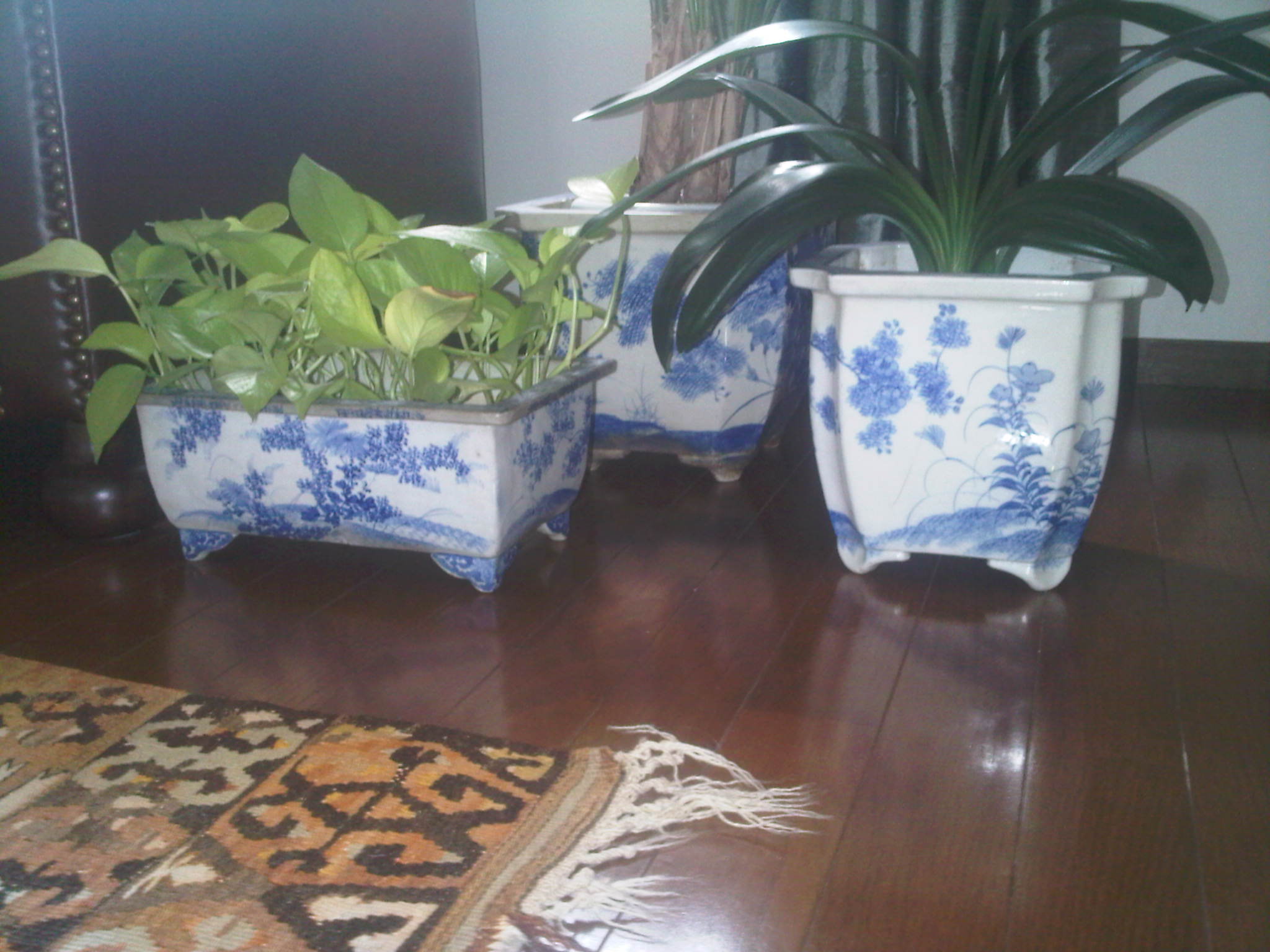


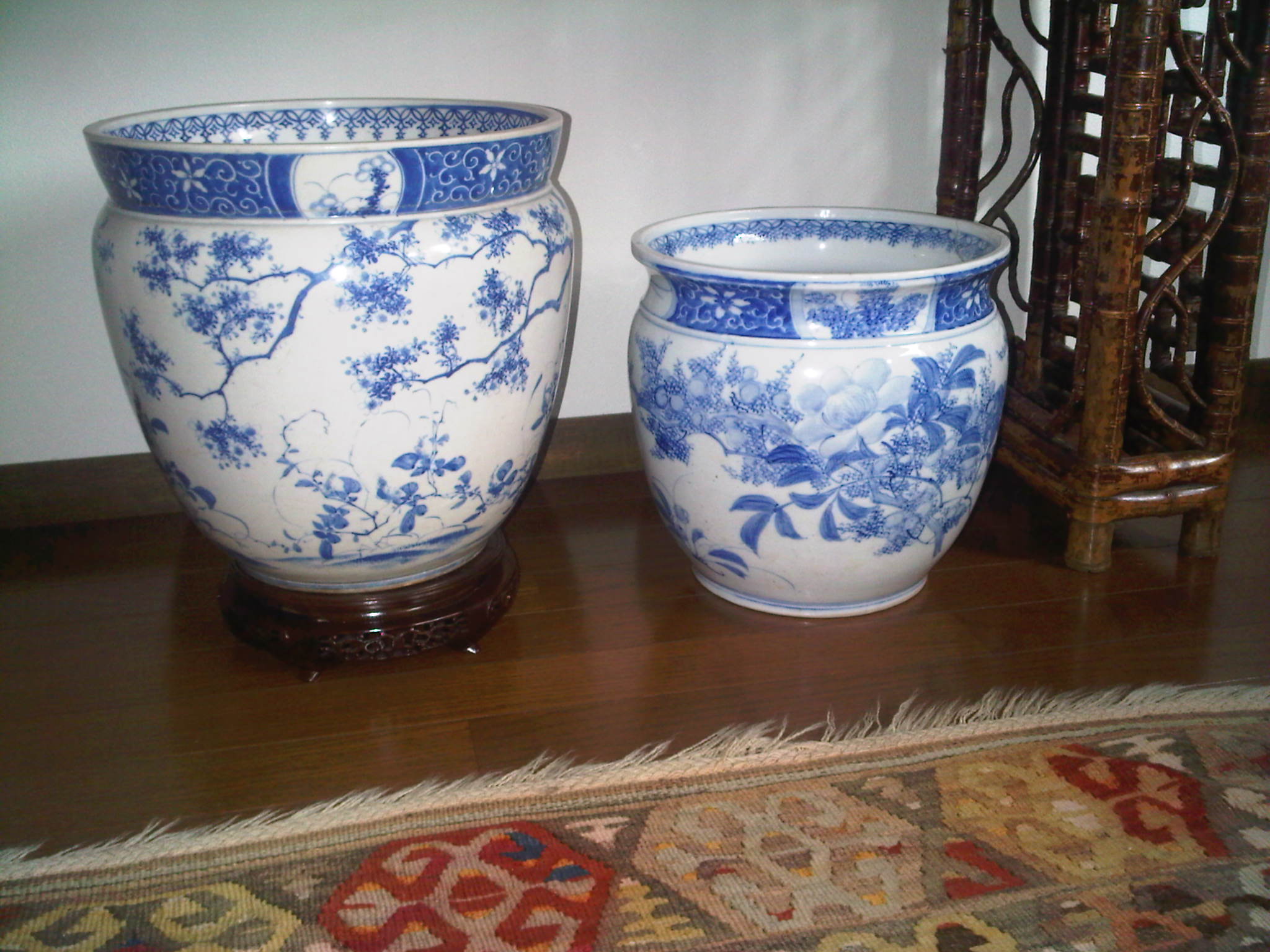

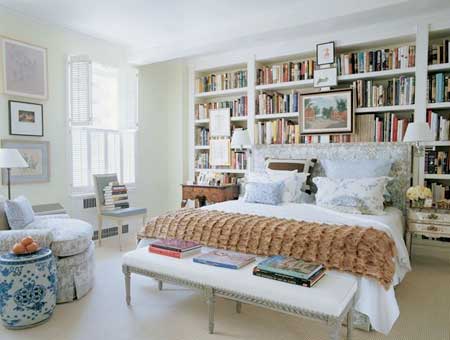


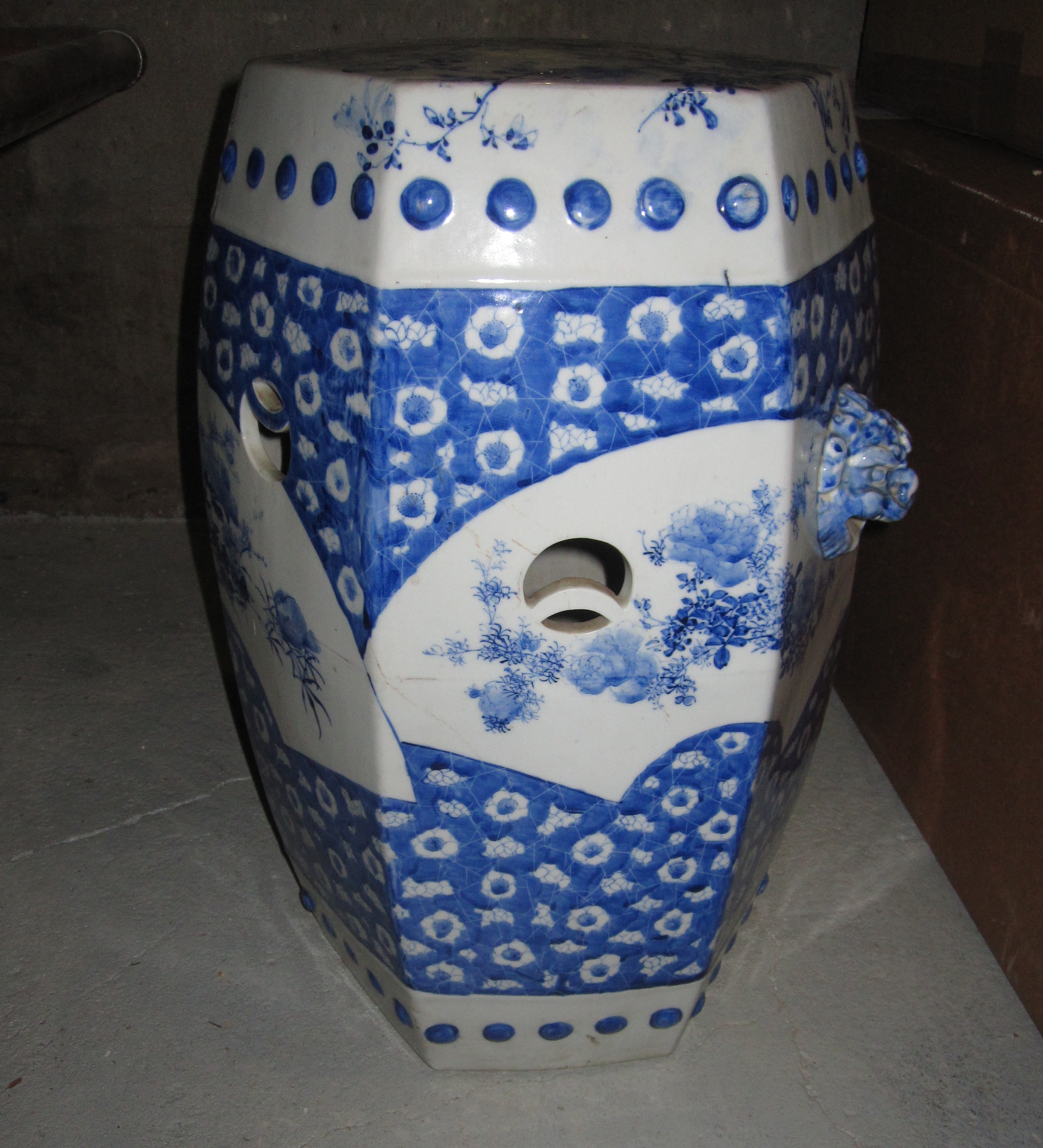


I remembered this! So glad you “re-found” it.
Me too!
I really like this a lot. Just got back from the first trip to Kyoto- it was wonderful!How’s home?
Kyoto is so wonderful! I am looking forward to reading about more of your adventures! And home is great, if only it would warm up!
I have always loved the design with the circles (next to the cricket cage) what are those? i wish i would have picked some up — sorry to have missed you in NY!!!!
They are called mon when they are just designs and kamon when they are family crests. For more on them, see my earlier post “More on Mon…The Polka Dots of Japan”
Great story! Did you buy it at a shop on the Jersey shore?
You got it! It was a real surprise find and proves that you never know what you will find where!
Hi
I was so delighted to find this post as I’m a newcomer to Japanese porcelain and it’s already nearly an obsession! I recently bought a very pretty pair of vases which I’d worked out were probably turn of the century Seto but wasn’t sure. They are very similar in pattern (almost identical in fact) to your tea cup and planters. I would love to send you a picture. Any more information you could give me about them would be very appreciated.
Clare- I sent you a separate email – would love to see your Seto pieces!
________________________________